Perimeter of a Square - Definition, Examples, Quiz, FAQ, Trivia
Learn how to calculate the perimeter of squares with simple explanations and fun activities!
What is Perimeter?
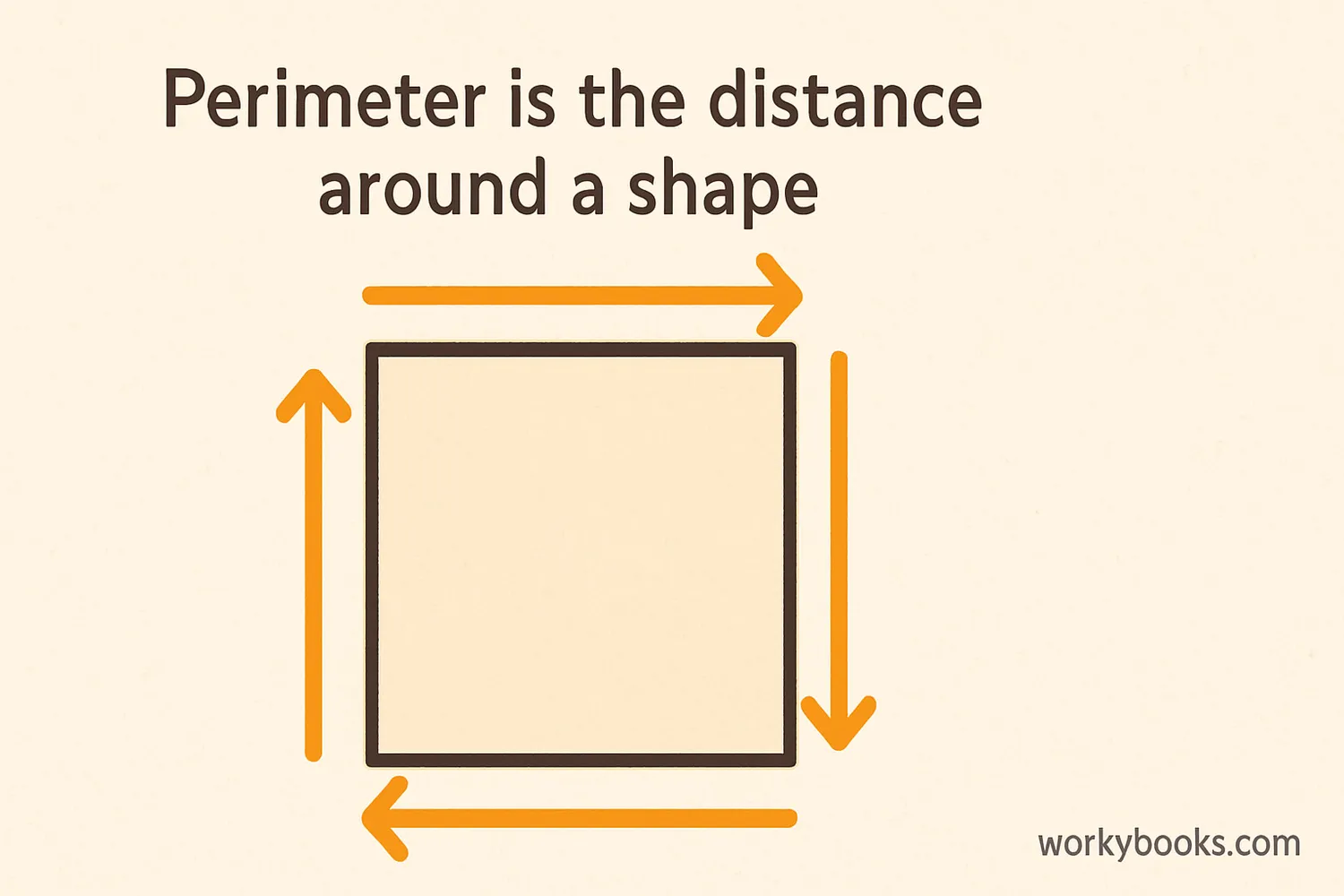
Perimeter is the distance around the outside of a shape. Think of it like putting a fence around your backyard - the perimeter would be how much fencing you need to go all the way around.
To find the perimeter of any shape, you add up the lengths of all its sides. It's like taking a walk around the edge of the shape and measuring how far you've gone!
Math Fact!
The word "perimeter" comes from Greek words meaning "around" (peri) and "measure" (metron). So it literally means "measure around"!
What Makes a Square Special?
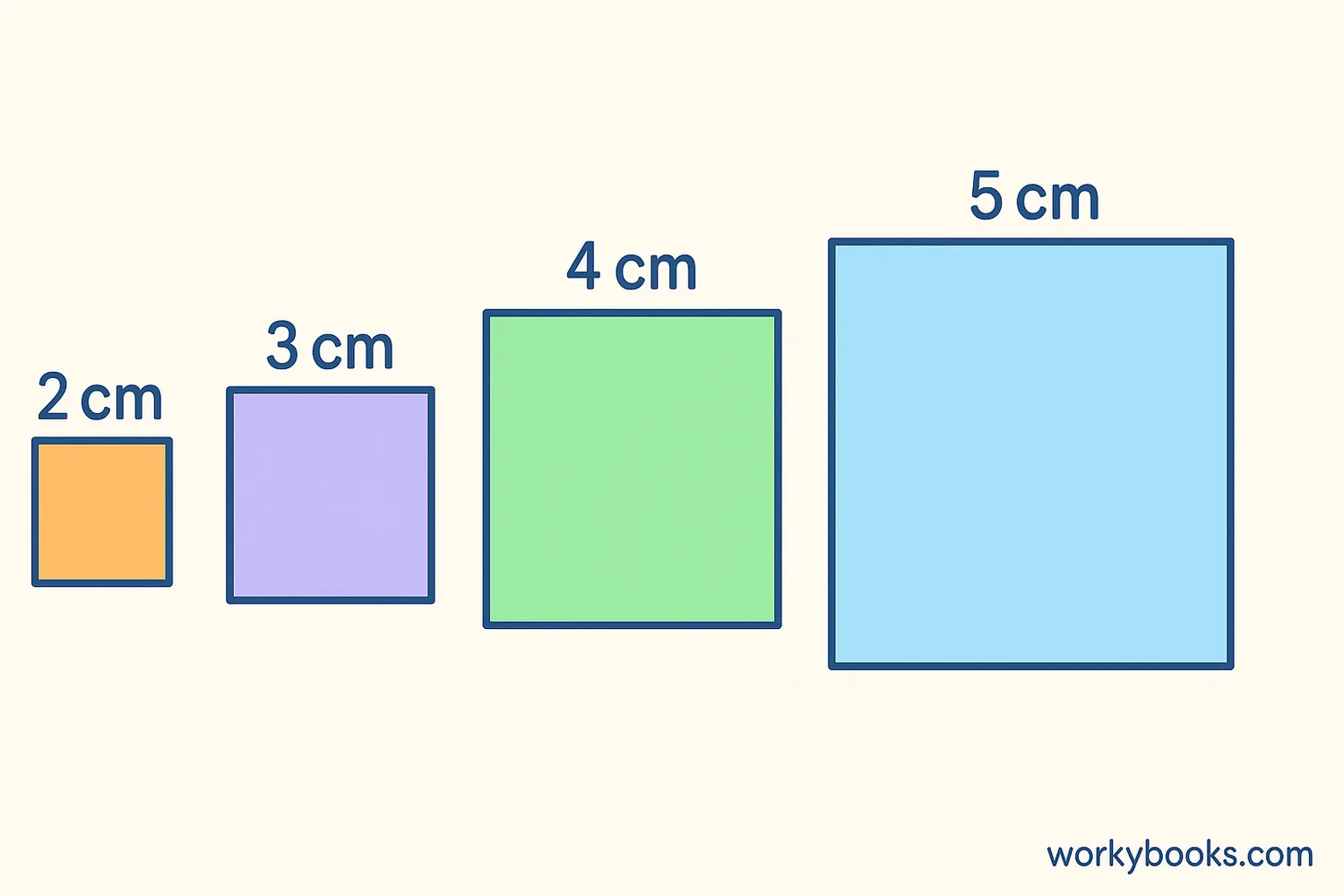
A square is a special shape with some unique properties:
Equal Sides
All four sides have exactly the same length
Right Angles
Each corner forms a perfect 90-degree angle
Sets of Parallel Sides
Opposite sides are parallel to each other
Because all four sides of a square are equal, finding its perimeter is easier than for many other shapes. You don't need to measure all four sides separately!
Perimeter Formula for a Square
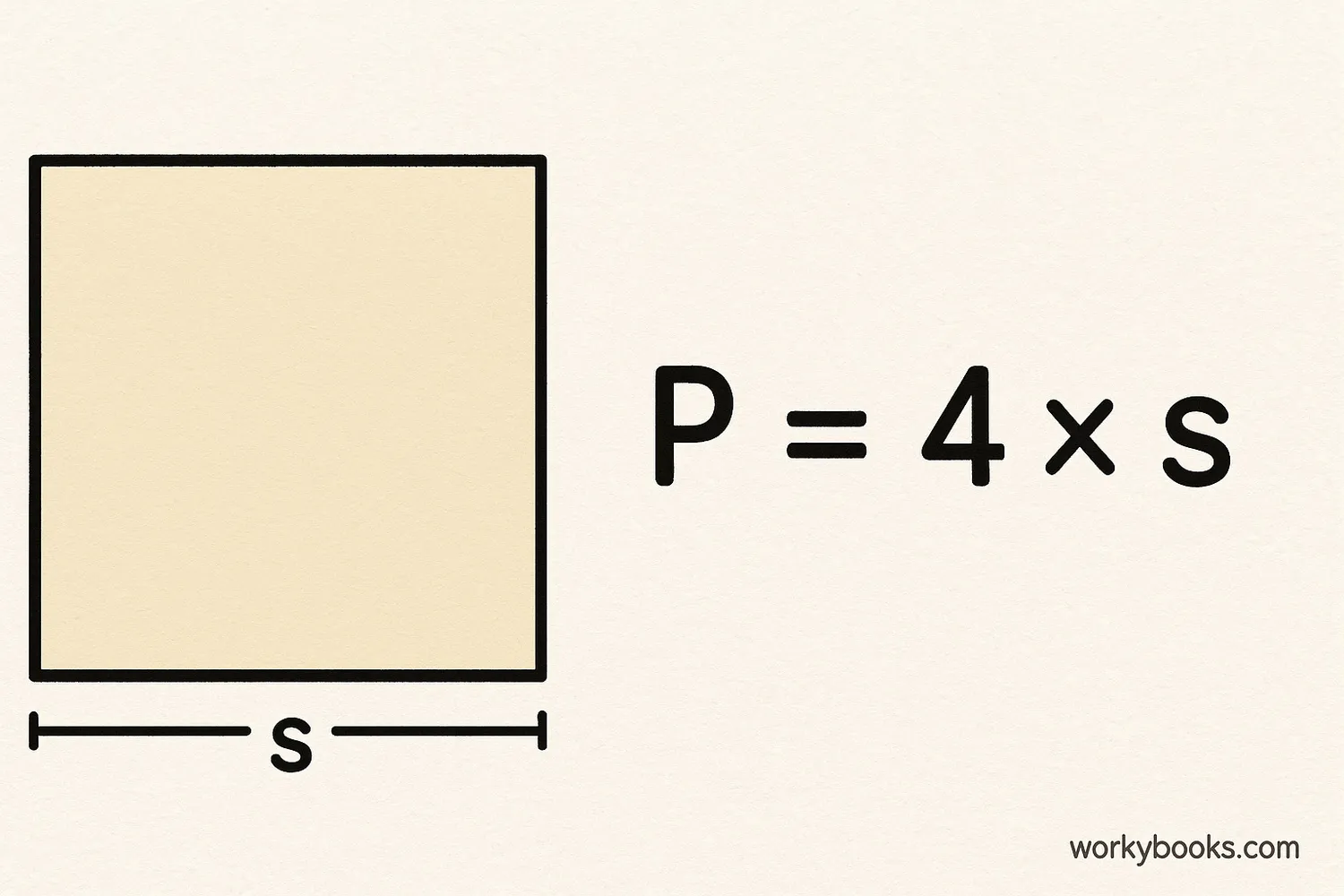
Since all four sides of a square are equal, we can use a simple formula to find its perimeter:
Where:
P stands for Perimeter
s stands for the length of one side
This means to find the perimeter of a square, you multiply the length of one side by 4.
Remember!
Because multiplication is commutative (4 × s is the same as s × 4), you can multiply in either order and get the same answer!
Example Problems
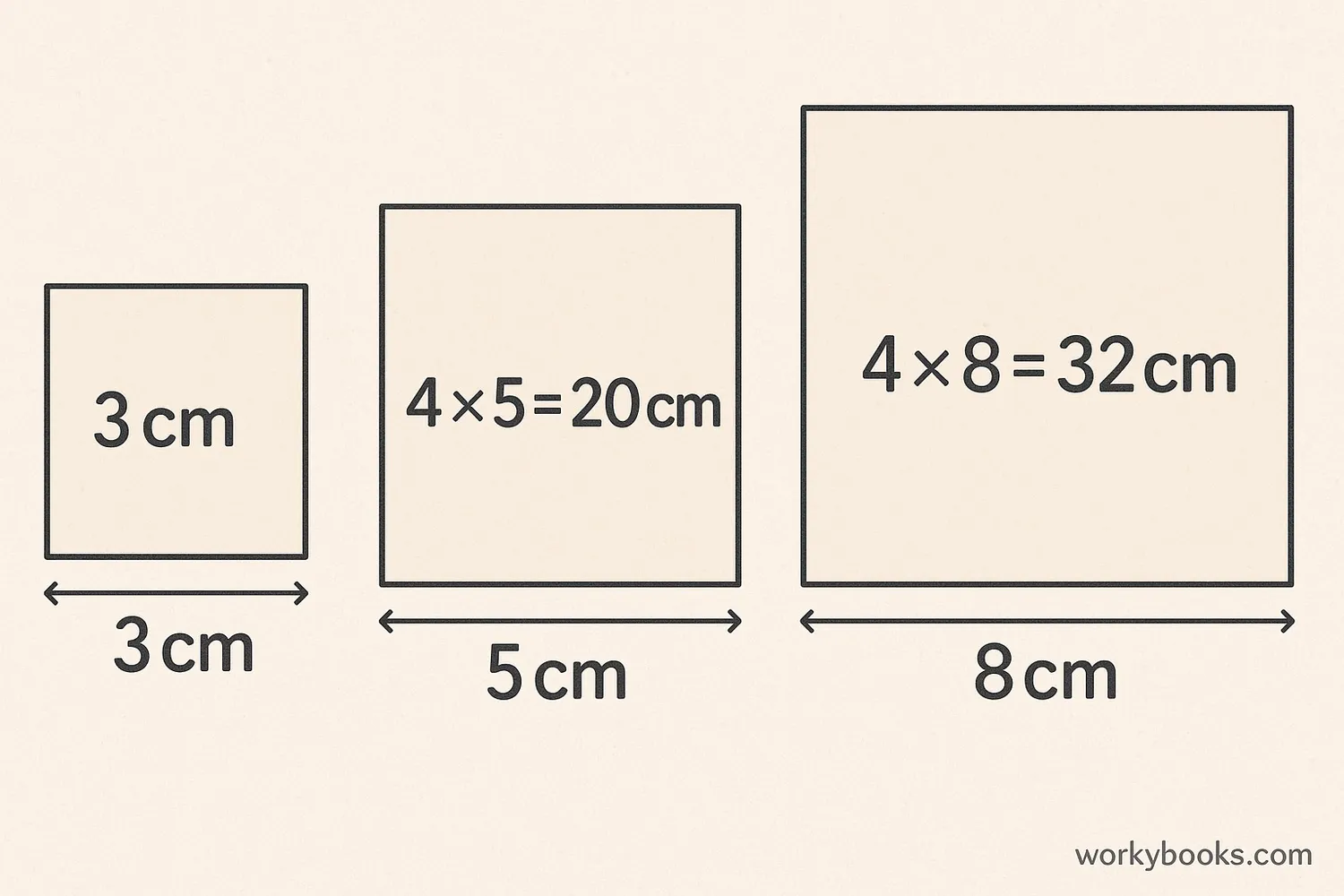
Let's look at some examples of how to calculate the perimeter of a square:
Example 1:
A square has sides that are 5 cm long. What is its perimeter?
Solution: P = 4 × 5 = 20 cm
Example 2:
A square garden has sides measuring 12 feet. How much fencing is needed to go around it?
Solution: P = 4 × 12 = 48 feet of fencing needed
Example 3:
If a square has a perimeter of 36 meters, how long is each side?
Solution: Since P = 4 × s, then s = P ÷ 4 = 36 ÷ 4 = 9 meters per side
Notice that in Example 3, we worked backward from the perimeter to find the side length. This is called solving for the unknown.
Word Problems
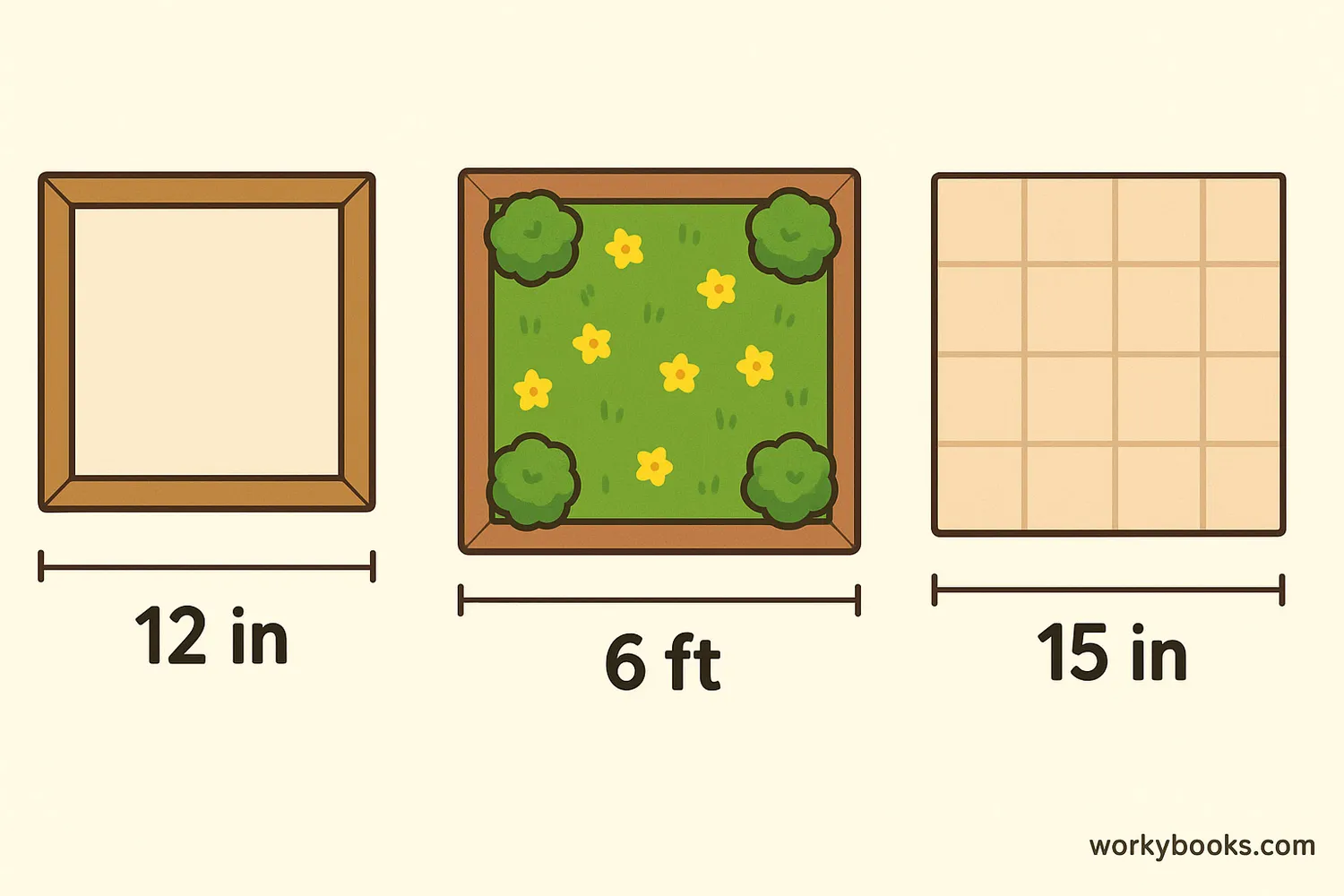
Now let's try some word problems that you might encounter in real life:
Problem 1:
Maria is making a square picture frame. Each side is 25 cm long. What is the total length of wood she needs?
Solution: P = 4 × 25 = 100 cm of wood needed
Problem 2:
A square park has a perimeter of 200 meters. How long is each side of the park?
Solution: s = P ÷ 4 = 200 ÷ 4 = 50 meters per side
Problem 3:
Tom wants to put a ribbon around a square box. The box has sides of 15 cm. If ribbon costs $0.10 per cm, how much will it cost?
Solution: First find perimeter: P = 4 × 15 = 60 cm. Then calculate cost: 60 × $0.10 = $6.00
Word problems help us see how math is used in everyday situations. Always read carefully to understand what the problem is asking!
Perimeter Quiz
Test your knowledge with this quiz! Answer all 5 questions to see how much you've learned about the perimeter of squares.
Frequently Asked Questions
Here are answers to some common questions about the perimeter of squares:
Math Trivia
Discover some interesting facts about squares and perimeter!
Perfect Shape
The square is considered a "regular polygon" because all its sides and angles are equal. It's one of only three regular shapes that can tile a plane (cover a surface without gaps).
Ancient Knowledge
Ancient Egyptians used squares and their properties over 4,000 years ago to measure and divide farmland after the Nile River flooded each year.
Same Perimeter, Different Area
Many different shapes can have the same perimeter. A square will always have the largest possible area for any given perimeter compared to other rectangles.
Word Origins
The word "square" comes from the Latin "exquadra" meaning "out of four." This makes sense since squares have four equal sides and four right angles.





